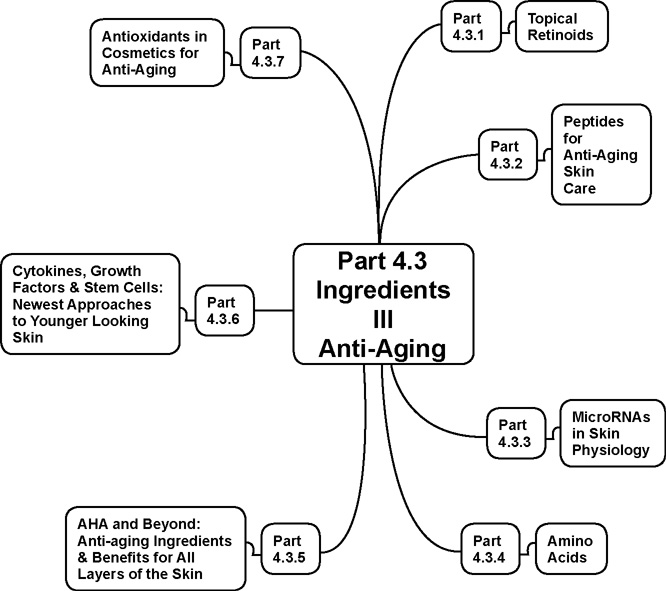ANTI-AGING

Part 4.3.1
Author
Aanand N. Geria, MD
ABSTRACT:
Topical retinoids are derivatives of vitamin A used widely in the field of dermatology. They are indicated for treating a variety of conditions including acne, psoriasis, pigmentary disorders, and photo-aging. Retinoids are available over the counter in cosmeceutical products or by prescription. The most common side effect is irritation, including redness, scaling, and dryness.
b. Melasma and Post-Inflammatory Hyperpigmentation
Retinoids are derived from vitamin A and may be synthetic or natural. They are commonly used in dermatology to treat a wide array of skin conditions. This class of medication can be administered orally or topically; however, the latter is more common and will thus be the focus of this chapter.
The first topical retinoid was developed over 40 years ago in the form of all-trans retinoic acid (ATRA), which is otherwise known as tretinoin. It was brought to the market in the 1970s as a treatment for acne under the trade name Retin-A. It was not until 1986 that the beneficial effects of tretinoin on photo-aging were first published.1 This breakthrough research spurred the development of numerous prescription and over-the-counter products designed to treat wrinkles and other signs of aging.
Vitamin A exists in three forms: an aldehyde (retinal), an alcohol (retinol), and a carboxylic acid (retinoic acid), which is the active form in the skin. All-trans retinol is the form of vitamin A delivered to the skin by way of the bloodstream after the metabolism of dietary retinyl esters. Within the cell, all-trans retinol is either oxidized to form retinoic acid or stored as retinyl esters, depending on whether retinoic acid is needed by the cell. This may explain why topical retinoic acid is more irritating than topical retinol; it can’t be stored and thus may overwhelm cellular processes and lead to adverse effects.
Stay updated, free articles. Join our Telegram channel

Full access? Get Clinical Tree








